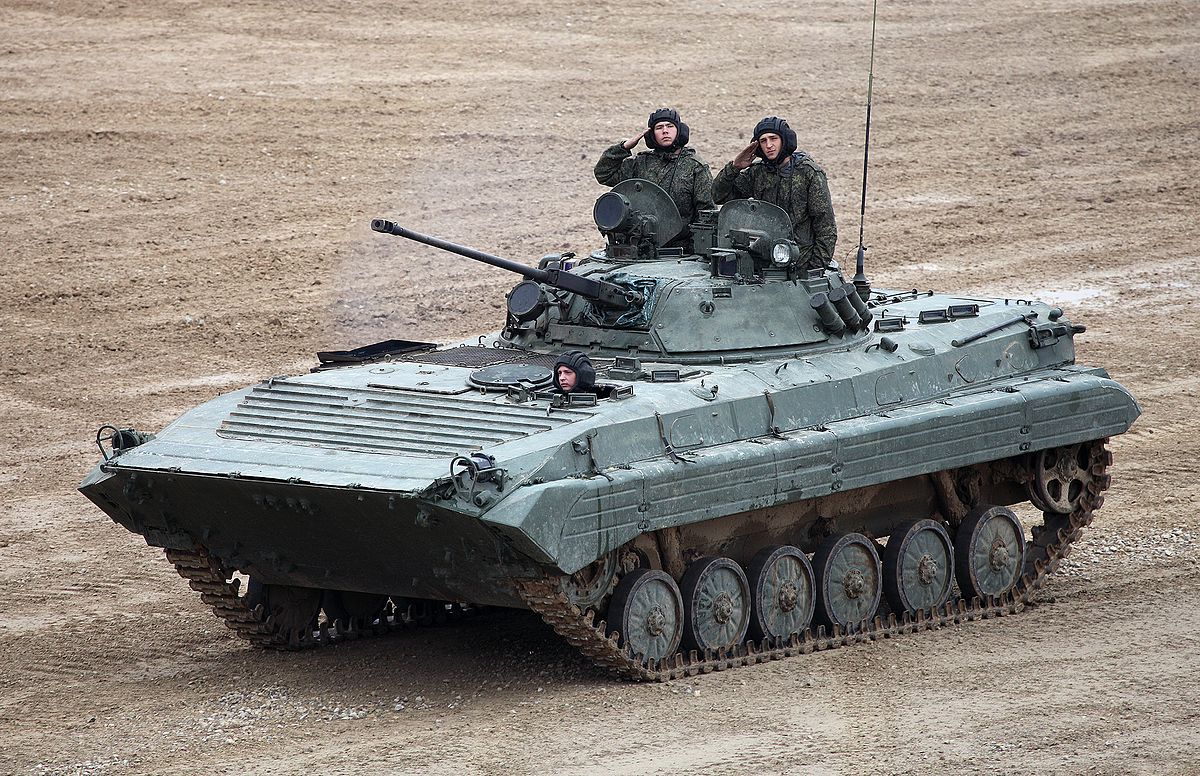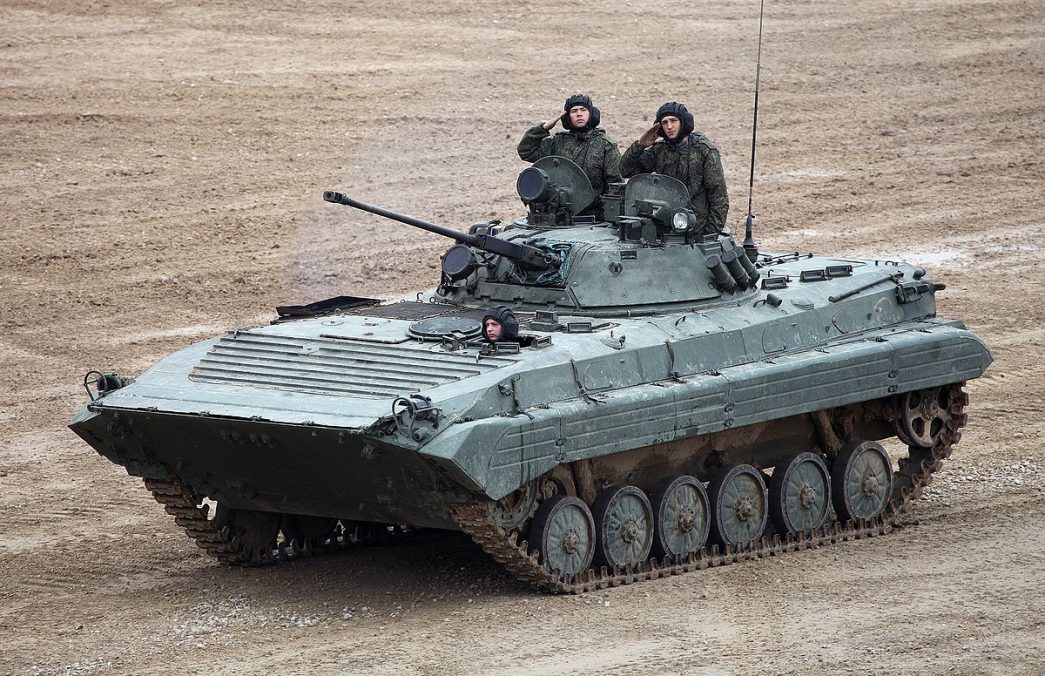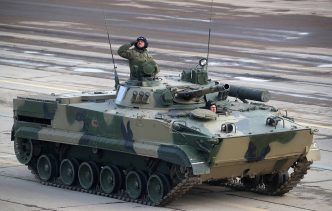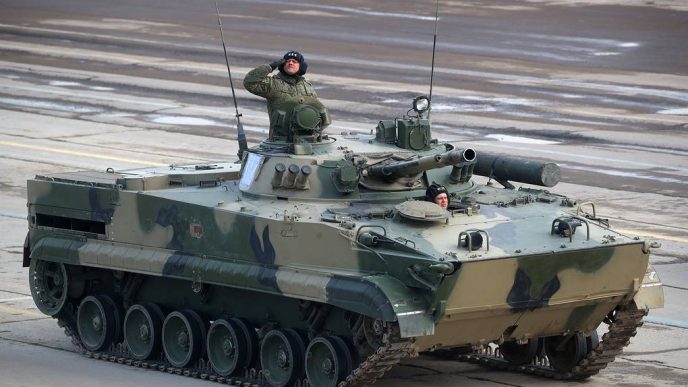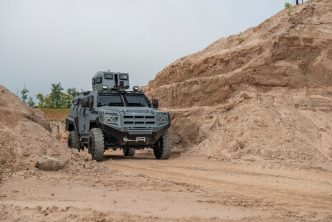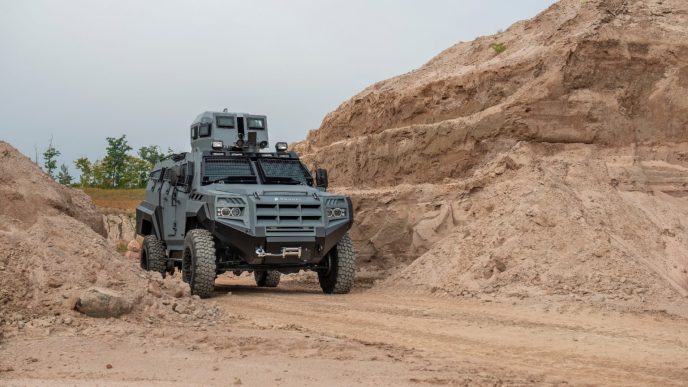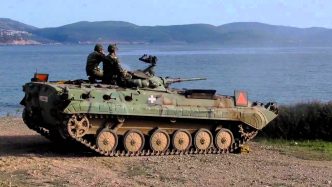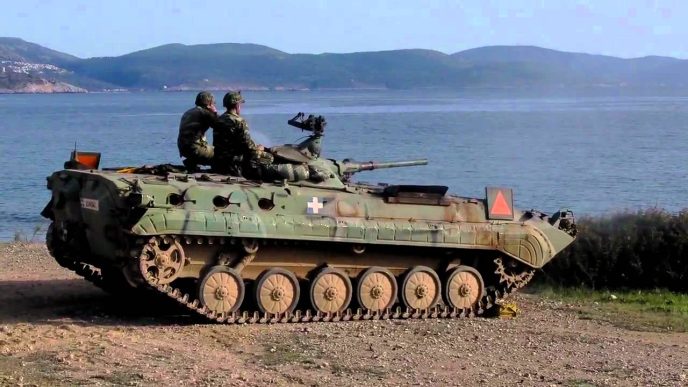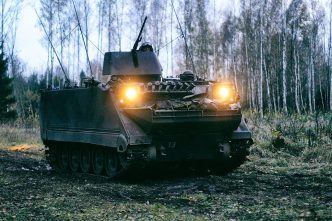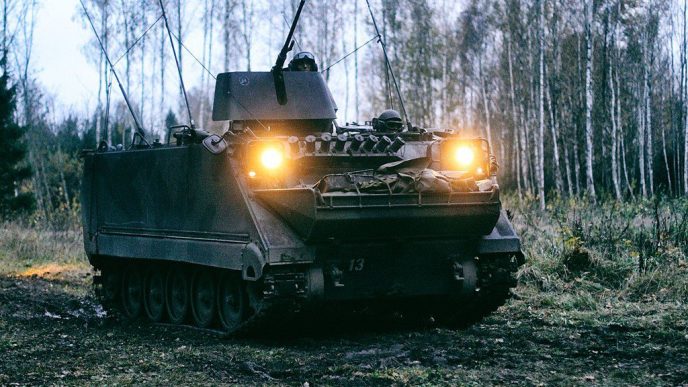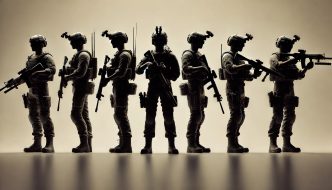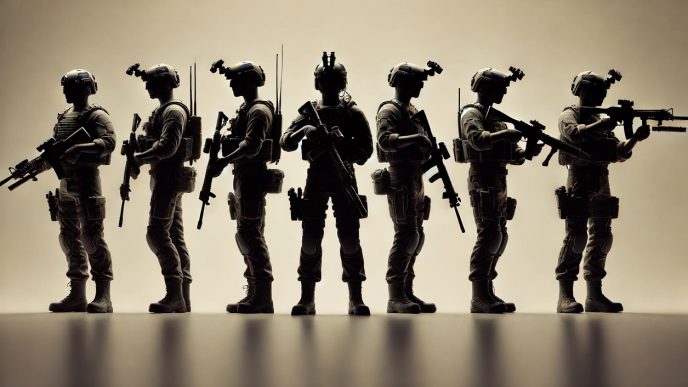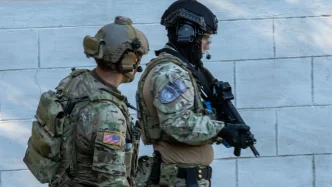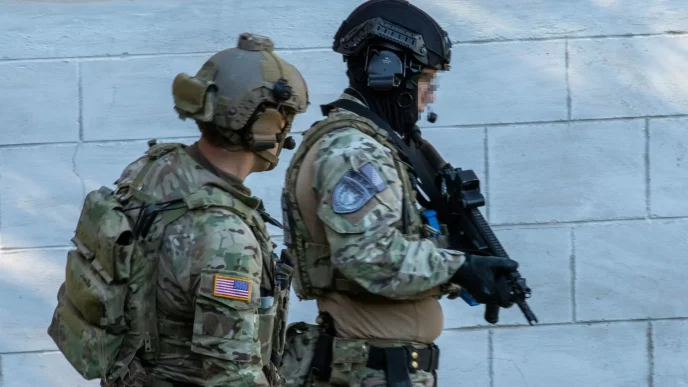The BMP-2 is an SSSR-made amphibious infantry fighting vehicle designed and developed during the 1980s as a successor of the earlier version of the infantry fighting vehicle designated as BMP-1. BMP stands for Boyevaya Mashina Pekhoty in Russian, which literally means “infantry combat vehicle.”
Key recognition features
- Pointed nose with almost horizontal ribbed glacis plate, driver front left, engine compartment louvers in the roof to the right, turret slightly to the vehicle’s rear, troop compartment rear with two roof hatches. Vertical hull rear with two bulged doors opening rear. Similar in appearance to BMP-1 but with a different turret and wider hull
- The turret has a long-barreled 30 mm cannon with muzzle brake, three forward-firing smoke dischargers on each side of the turret, ATGW launcher in the center of the turret at the rear. Four firing ports on the left side of the hull and three on the right, plus one on each rear door
- Suspension on each side has six road wheels, drive sprocket front, idler rear, and track-return rollers covered by skirts with horizontal ribs.
Development
The BMP-2 IFV is a further development of BMP-1 and was first seen in public during a Moscow parade in 1982. In addition to a more powerful engine, BMP has a new two-man turret with different weapons. The driver sits in the front left with one of the seven soldiers to his rear, the engine compartment to his right. The turret is slight to the rear with a troop compartment far rear. Six infantrymen sit three each side back to back, each man with a firing port in the hull and a periscope above.

The two-man turret has a commander on the right, a gunner on the left, a new 30 mm cannon with powered elevation up to plus 75 degrees for use against helicopters and slow-flying aircraft, a turret that traverse 360 degrees, and a 30 mm cannon fully stabilized. The 7.62 mm machine gun is mounted coaxially to the left of the 30 mm cannon.
Mounted on the turret roof rear is a launcher for AT-5 Spandrel ATGW, which has a maximum range of 4,000 meters. Some vehicles have launchers for 2500 mm AT-4 Spigot instead. Some BMP-2s have applique armor on turrets and hulls. BMP-2 is fully amphibious, propelled by its tracks. Before entering the water, a trim vane is erected at the front of the hull, and bilge pumps are switched on.
Variants
BMP-2D
Late production vehicle with applique armor and provision for fitting mine-clearing equipment under the nose of the vehicle
BMP-2K
Command version with additional communications equipment.
BVP-2
Czechoslovakian designation for BMP-2
Sarath
India’s designation for BMP-2. BMP-2 filled in specialized roles much better than any Infantry Fighting Vehicle in Indian Army. And this is the sole reason why BMP-2 fills in a perfect niche of being a part of the Indian Offensive.
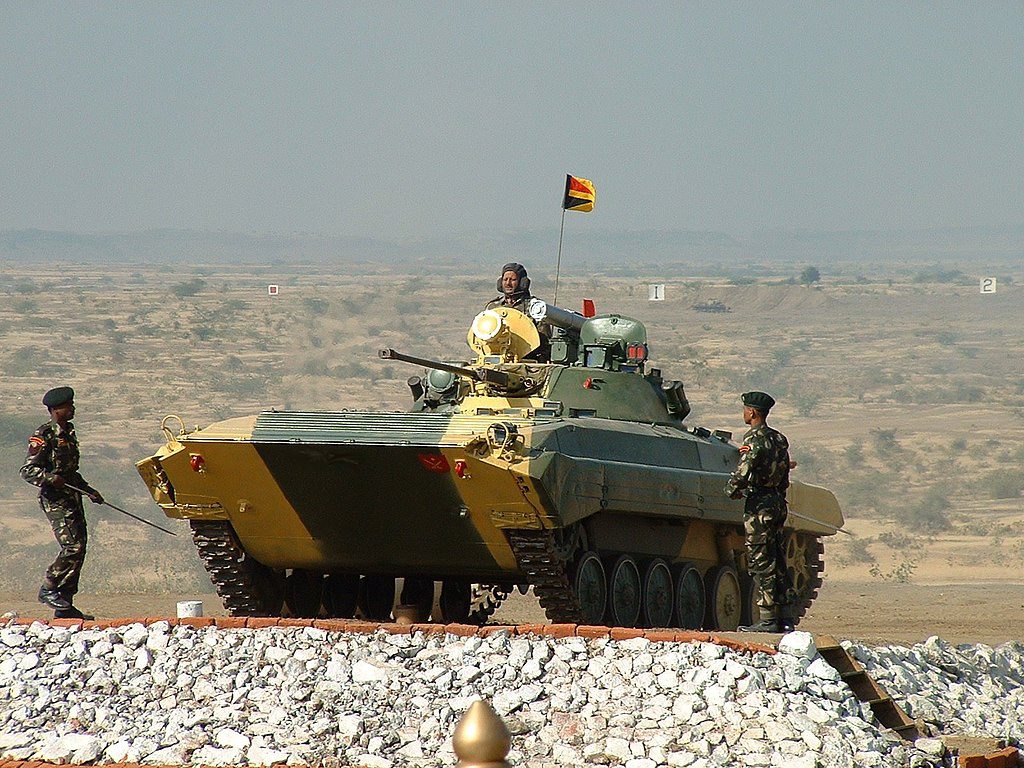
Difference between BMP-1 and BMP-2
The BMP-1 has a crew of three and room for eight infantry, while the BMP-2 has seating for one fewer infantry. Both are amphibious, lightly armored, and have two rear doors for the infantry to exit. Their hulls are almost identical except for noticeable external differences in the side skirts.
The BMP-1 is armed with a low velocity 73-mm main gun, machine gun, and 9K11 Malyutka (NATO name AT-3 Sagger) AT missile; the BMP-2’s larger turret is armed with a 30-mm autocannon and machine gun, and a 9M113 Konkurs (NATO name AT-5 Spandrel) guided missile. The BMP-2 has only two, though larger, roof hatches because of the room taken up by the larger turret.
Technical specifications
| Country of origin: | SSSR |
| Manufacturer: | Soviet state arsenals. It was manufactured under license in former Czechoslovakia and India. |
| Crew: | 3+7 |
| Armament: | 1 x 30 mm cannon, 1 x 7.62mm MG (coaxial), 1 x Spandrel ATGW |
| Ammunition: | 500 x 30 mm, 2000 x 7.62 mm, 4 x Spanderl ATGW |
| Length: | 6.735 m |
| Width: | 2.45 m |
| Ground clearance: | 0.42 m |
| Weight, combat: | 14,300kg |
| Power-to-weight ratio: | 20.30 hp/tonne |
| Engine: | Model UTD-20 6-cylinder diesel developing 300hp at 2,600 rpm |
| Maximum road speed: | 65 km/h |
| Maximum water speed: | 7 km/hr |
| Maximum road range: | 600 km |
| Fuel capacity: | 462 lit |
| Fording: | Amphibious |
| Vertical obstacle: | 0.7 m |
| Trench: | 2.5 m |
| Gradient: | 60% |
| Side slope: | 30% |
| Armor: | Classified |
| Armor type: | Steel |
| NBC system: | Yes |
| Night vision equipment: | Yes (commander, gunner, and driver) |
